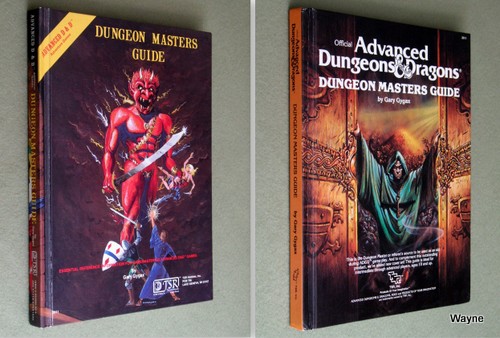

Second, the structure was explicitly built for exploration. Therefore, the hexes in the Alexandrian Hexcrawl were a player-unknown structure. In my personal playtesting, I found that the abstraction of the hex was extremely convenient on the GM’s side of the screen (for tracking navigation, keying encounters, and so forth), but had a negative impact on the other side of the screen: I wanted the players interacting with the game world, not with the abstraction. The Alexandrian Hexcrawl had several key design goals.įirst, I wanted a structure that would hide the hexes from the players.
#Ad&d 1st edition dmg hexes combat series
In 2012, before 5 th Edition was released, I wrote Hexcrawls: This series discussed hexcrawl procedures and laid out a robust structure for prepping and running hexcrawls in both 3 rd Edition and the original 1974 edition of the game. Hex-clearing procedures were once quite common, too, as an antecedent for stronghold-based play. For example, mechanics for random encounters and navigating (or, more importantly, getting lost in) trackless wastes are quite common. (There is often a 100% chance that the keyed content will be triggered.)Īround this basic structure you can build up a lot of additional features and alternative gameplay. When the PCs enter a hex, the GM will tell them the terrain type and determine whether or not the keyed content of the hexmap is triggered: If so, the PCs experience the event, encounter the monsters, or see the location.

After determining which hex the PCs are starting in, the GM will use these mechanics (and the decisions the players make) to track their movement.

The format has returned to prominence in recent years through releases like the Kingmaker campaign for Pathfinder and Tomb of Annihilation for D&D 5 th Edition. It wasn’t until Necromancer Games brought the Wilderlands back into print and Ben Robbins’ West Marches campaign went viral that people started to rediscover the lost art of the hexcrawl. That’s when the 2 nd Edition of Advanced Dungeons & Dragons removed hexcrawling procedures from the rulebooks entirely. By 1989 there were only a few vestigial hex maps cropping up in products and none of them were actually designed for hexcrawl play. Although it was initially a core component of the D&D experience, the hexcrawl slowly faded away. The hexcrawl is a game structure for running wilderness exploration scenarios.


 0 kommentar(er)
0 kommentar(er)
